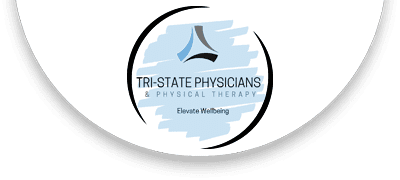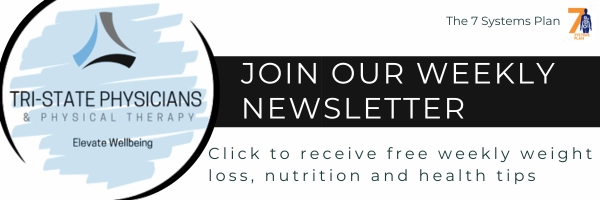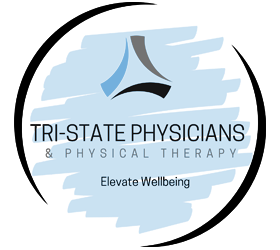Nitric Oxide the Essential Midlife Molecule for Health and Vitality in South Sioux City NE
The Significance of Nitric Oxide
Understanding the crucial role of nitric oxide (NO) in the body, especially during midlife, is vital to addressing various health issues, from fatigue and hormonal fluctuations to cardiovascular health and even sexual function.
Nitric oxide in South Sioux City NE is a vital molecule in the human body, playing a critical role in various physiological processes. Discovered in the 1980s and honored with a Nobel Prize in 1998, NO is a simple molecule composed of one nitrogen and one oxygen atom. It functions as a crucial signaling molecule, particularly in the cardiovascular system.
Dr. Michael Gregor, MD, highlights nitric oxide’s role in vasodilation—the relaxation of artery walls, which enhances blood flow and supports vascular health. Dr. Nathan Bryan, a renowned NO expert, emphasizes its importance in maintaining overall health and preventing disease. He points out that scientific discoveries like this often take years to become mainstream knowledge, which is why you may not have heard of NO.
Production and Decline of Midlife Nitric Oxide in South Sioux City NE
Nitric oxide is produced in the body primarily through two pathways: endogenously in the endothelium (inner lining of blood vessels) via the nitric oxide synthase enzyme (eNOS) and through dietary intake. However, as one ages, especially during midlife, NO production declines.
Dr. Bryan notes that by the time individuals reach their 40s, they produce about half the nitric oxide they did in their early 20s. This decline is further exacerbated by decreasing ovarian hormones in women, stimulating NO production.
Since we produce less NO in our blood vessels, we must focus on using our diet to increase NO as we age.
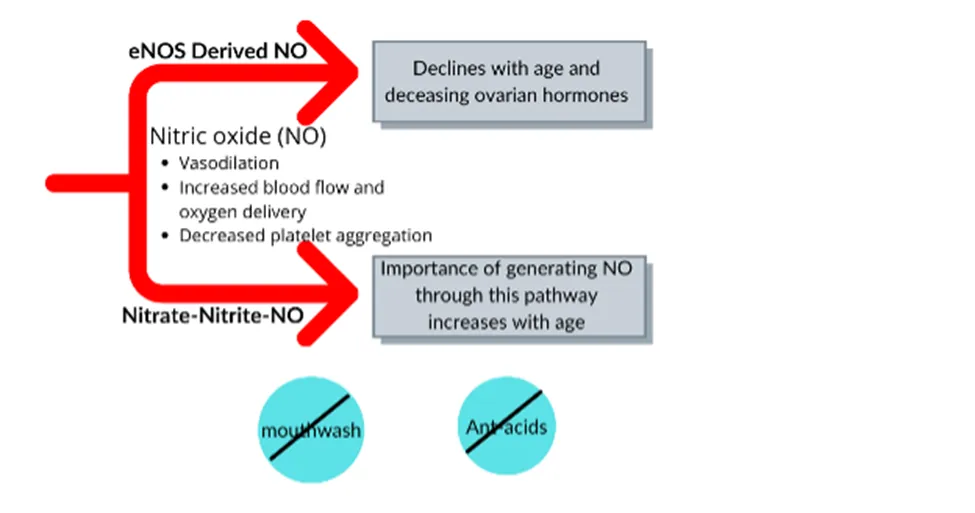
Dietary Pathway of Nitric Oxide Production
The dietary (nitrate-nitrite-nitric oxide) pathway becomes increasingly crucial in offsetting the decline of endogenous NO production. After consuming nitrates from foods like leafy greens, celery, and beets, oral bacteria convert these nitrates to nitrite. In the stomach’s acidic environment, nitrite is further reduced to nitric oxide, entering the bloodstream and contributing to overall vascular health.
The Interplay of Nitric Oxide, Estrogen, and Progesterone
Estrogen and progesterone play a significant role in stimulating NO production. This hormonal contribution is particularly evident in fertile women, where increased blood flow is essential for potential pregnancy. The decline in these hormones during midlife, especially in postmenopausal women, decreases nitric oxide production.
Endothelial Dysfunction and Cardiovascular Health
As nitric oxide levels drop, the endothelium suffers, leading to what is known as endothelial dysfunction. This condition is characterized by narrowed arteries and an increased tendency for plaque formation, marking the initial, often unnoticed stages of heart disease.
Also, declining nitric oxide is one of the chief reasons menopause is associated with an increased risk of heart disease. The figure below is from a 2012 study showing how flow-mediated dilation (FMD) declined from just about 10% to under 6% across the menopause transition.
Lifestyle Factors Affecting Nitric Oxide Levels
Everyday lifestyle choices can significantly impact NO levels. For example, a middle-aged woman might notice higher blood pressure despite maintaining a consistent lifestyle. This change could be due to reduced dietary intake of nitrates and the natural decline of nitric oxide production with age. Feeling tired and lethargic in midlife can often be attributed to lower NO levels and decreased blood flow.
Mouth breathing significantly impacts the body’s NO levels and overall health. Nitric oxide is also produced in the nasal passages. When we breathe through our nose, the air we inhale picks up this nitric oxide, which is then carried to our lungs and throughout the body, aiding in the efficient oxygenation of tissues.
However, in the case of mouth breathing, this vital process is bypassed, leading to lower levels of NO in the bloodstream. This reduction can have several consequences, including diminished oxygen transport and absorption and potential exacerbation of respiratory issues.
Mouth breathing also often correlates with less efficient breathing patterns, which can further reduce the body’s overall nitric oxide intake. Encouraging nasal breathing is essential for maintaining optimal nitric oxide levels and ensuring adequate oxygenation and respiratory health.
Try this simple tip if you breathe with your mouth open when you sleep. Place a piece of skin tape over your mouth (with a tiny hole pricked in the center) to force you to breathe through your nose.

The Impact of Nitric Oxide Decline
The importance of nitric oxide extends beyond the cardiovascular system, influencing immune response, cognitive function, and even sexual health. It affects many bodily functions, including hormonal balance, energy levels, and vitality. For instance, common symptoms in midlife, such as hot flashes and erectile dysfunction, are linked to reduced NO levels.
Erectile dysfunction (ED) and NO share a critical physiological connection. NO is essential for vasodilation—the widening of blood vessels—facilitating increased blood flow.
In the context of sexual arousal, NO triggers the relaxation of smooth muscles in the penile tissue, allowing blood to fill the corpus cavernosum, which leads to an erection. A deficiency in nitric oxide production can impede this process. Many ED treatments, including popular drugs, enhance nitric oxide signaling pathways to improve blood flow. Therefore, understanding and addressing factors that affect nitric oxide levels, such as lifestyle choices, diet, and underlying health conditions, are crucial in the management and treatment of ED.
Boosting Nitric Oxide Levels
Addressing the decline in nitric oxide involves a holistic approach. Incorporating nitrate-rich foods into the diet is a primary strategy. Regular physical activity also stimulates the production of NO in the endothelium. Sunlight directly on the skin also leads to the production of NO. Avoiding lifestyle choices that negatively impact NO levels, such as excessive use of mouthwash or antacids, is equally important.
Critical Steps to Produce Nitric Oxide
Step 1: Eat vegetables high in naturally occurring nitrate. (Not to be confused with the synthetic additives used as preservatives in cured meats.) As you can see from the diagram below, leafy greens are a great way to increase your nitrate intake. Insufficient intake impairs the body’s ability to produce NO.

Step 2: As you can see in from the diagram below (#5), bacteria in your mouth reduce nitrate to nitrite. This step is critical for the production of nitric oxide.
Step 3: Once nitrite enters the stomach, hydrochloric acid is needed to turn nitrite into nitric oxide (# 6).
If you are not eating foods high in nitrates, your body cannot produce NO in this pathway.
If you use mouthwashes that kill the bacteria in your mouth, as most do, this process does not begin. Sadly, 180 million Americans use mouthwash daily, inhibiting NO production.
If you have insufficient stomach acid or are taking over-the-counter antacids or prescribed proton pump inhibitors, as many do as they get older, NO won’t be produced. It is not a surprise that heartburn drugs, including famotidine (Pepcid) and ranitidine (Zantac), are known to reduce sexual desire in men. Refer back to "10 Strategies to Boost Your Stomach Acid” newsletter.
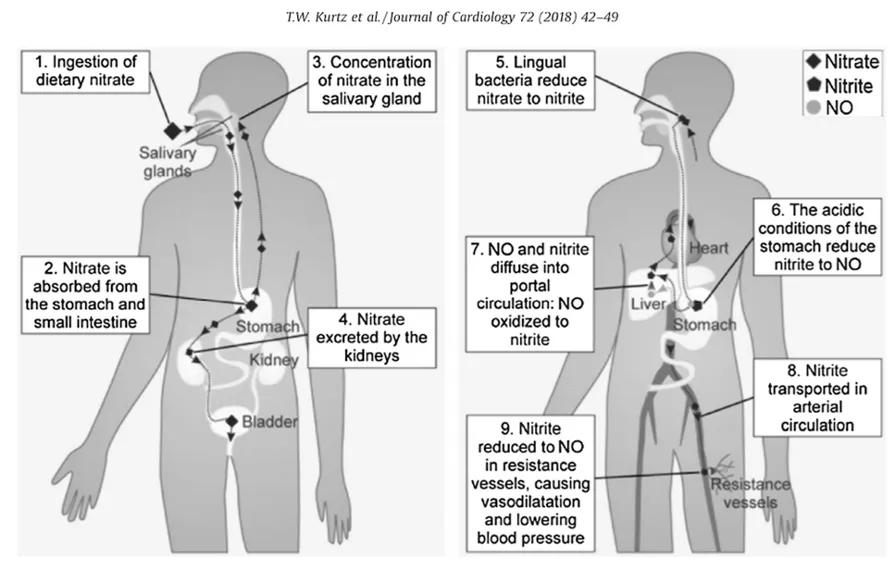
The 7 Systems Plan and Nitric Oxide
The 7 Systems Plan, a holistic health approach, offers several ways to combat the decline of nitric oxide (see lesson 3 in the Communication System 7 Systems Plan Online Course for more information). The 7 Systems Plan focuses on improving overall health through diet, exercise, and lifestyle modifications, which can enhance nitric oxide production. It emphasizes the importance of nutrient-rich diets, regular physical activity, and managing stress levels, all of which contribute to maintaining optimal nitric oxide levels in the body.
Understanding nitric oxide and adapting to the body’s changing needs is essential, especially during midlife. Recognizing the pivotal role of this molecule in maintaining health and preventing disease is crucial. By embracing dietary and lifestyle changes, one can effectively counter the natural decline of nitric oxide and maintain vitality well into the later stages of life.
For your health,
Dr. Pat
Video of the Week
Recipe of the Week
Teresa’s 7 Systems Kitchen
Enjoy eating the vegetables mentioned above (my favorite ways to prepare them are steaming, roasting, or having them raw) to boost nitric oxide.
Another effortless way to boost nitric oxide is adding Organic Beet Powder by Wellmade from Thrive Market to your functional food shake.
Sign up below to get our weekly newsletter
sent directly to your email inbox!
OFFICE HOURS
Monday
8:00am - 6:00pm
Tuesday
8:00am - 6:00pm
Wednesday
8:00am - 6:00pm
Thursday
8:00am - 6:00pm
Friday
8:00am - 6:00pm
Saturday
8:00am - 10:45am
Sunday
Closed
Tri-State Physicians &
Physical Therapy Clinic
3900 Dakota Avenue #6
South Sioux City, NE 68776

